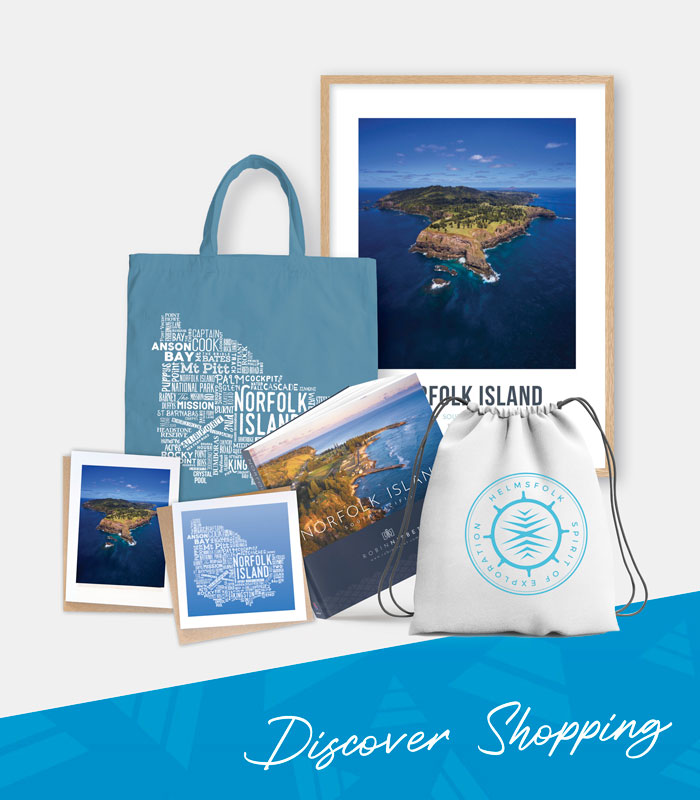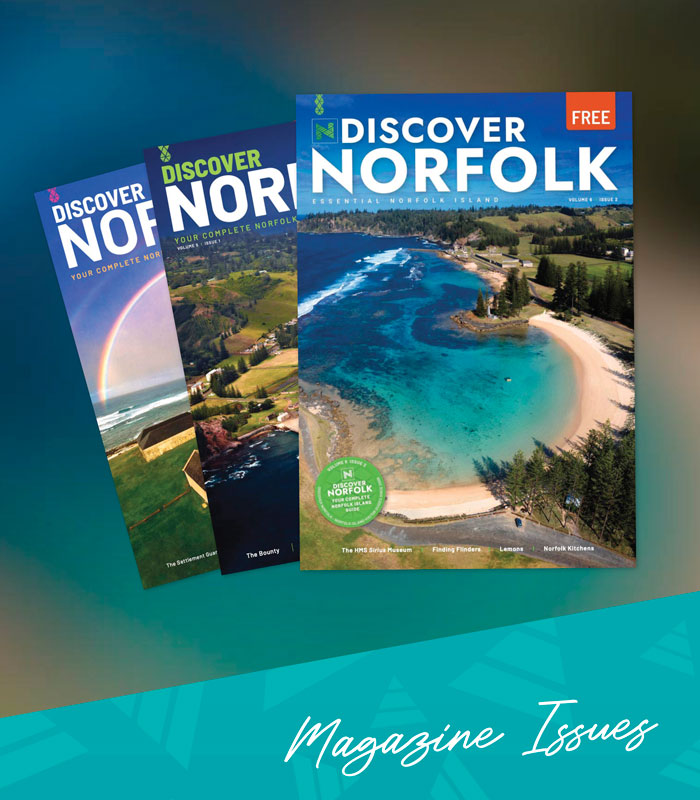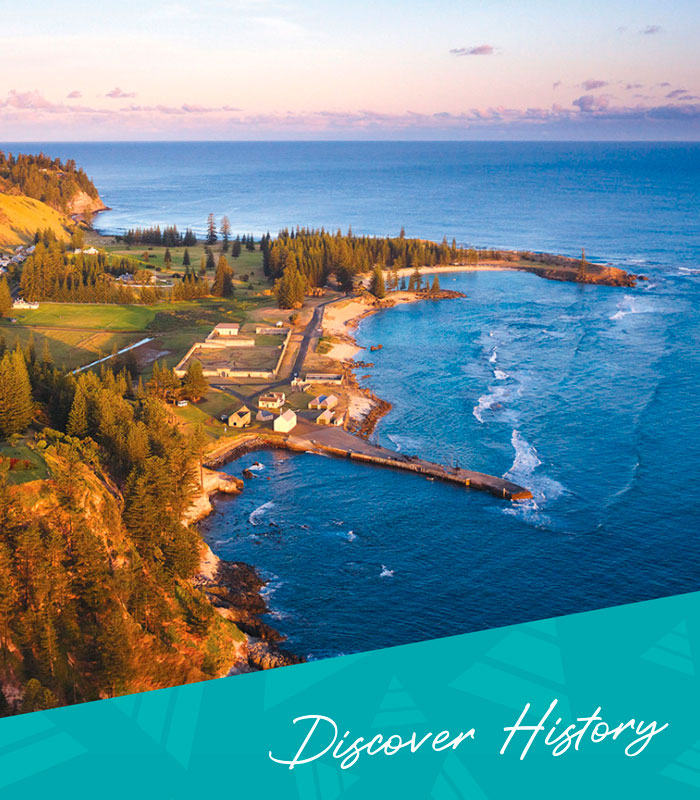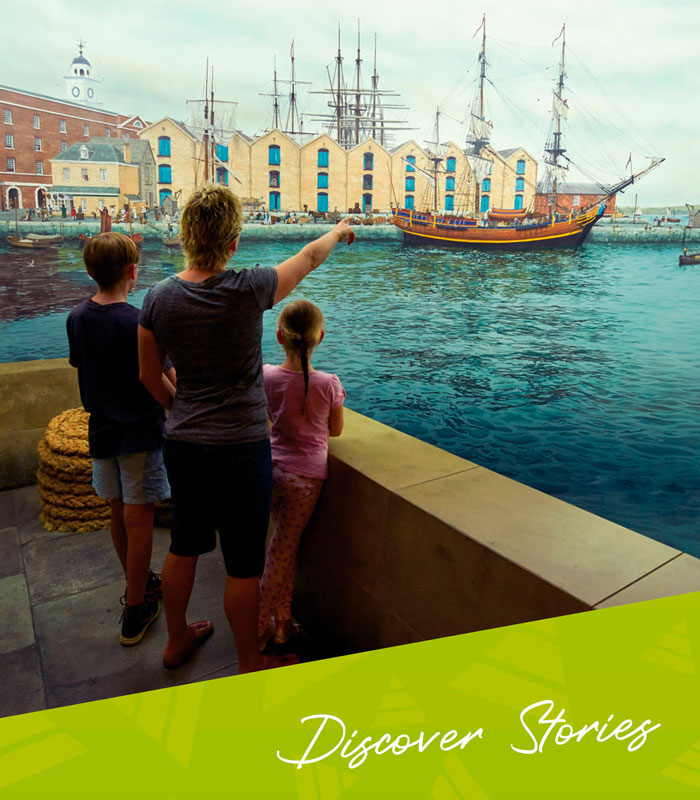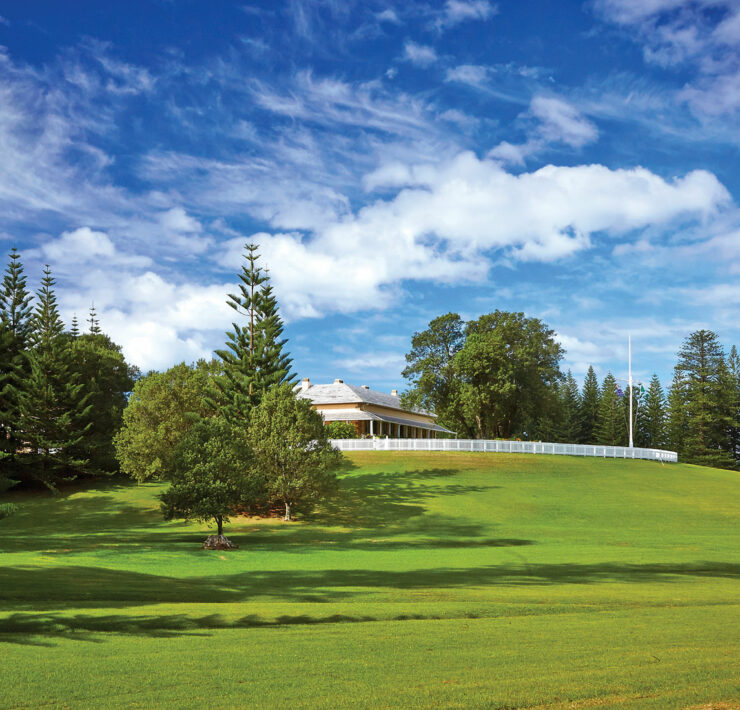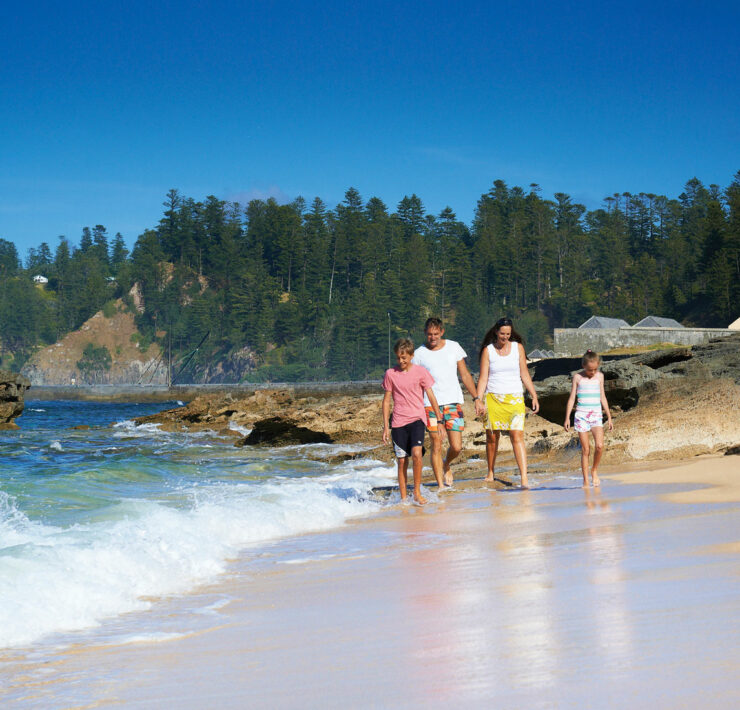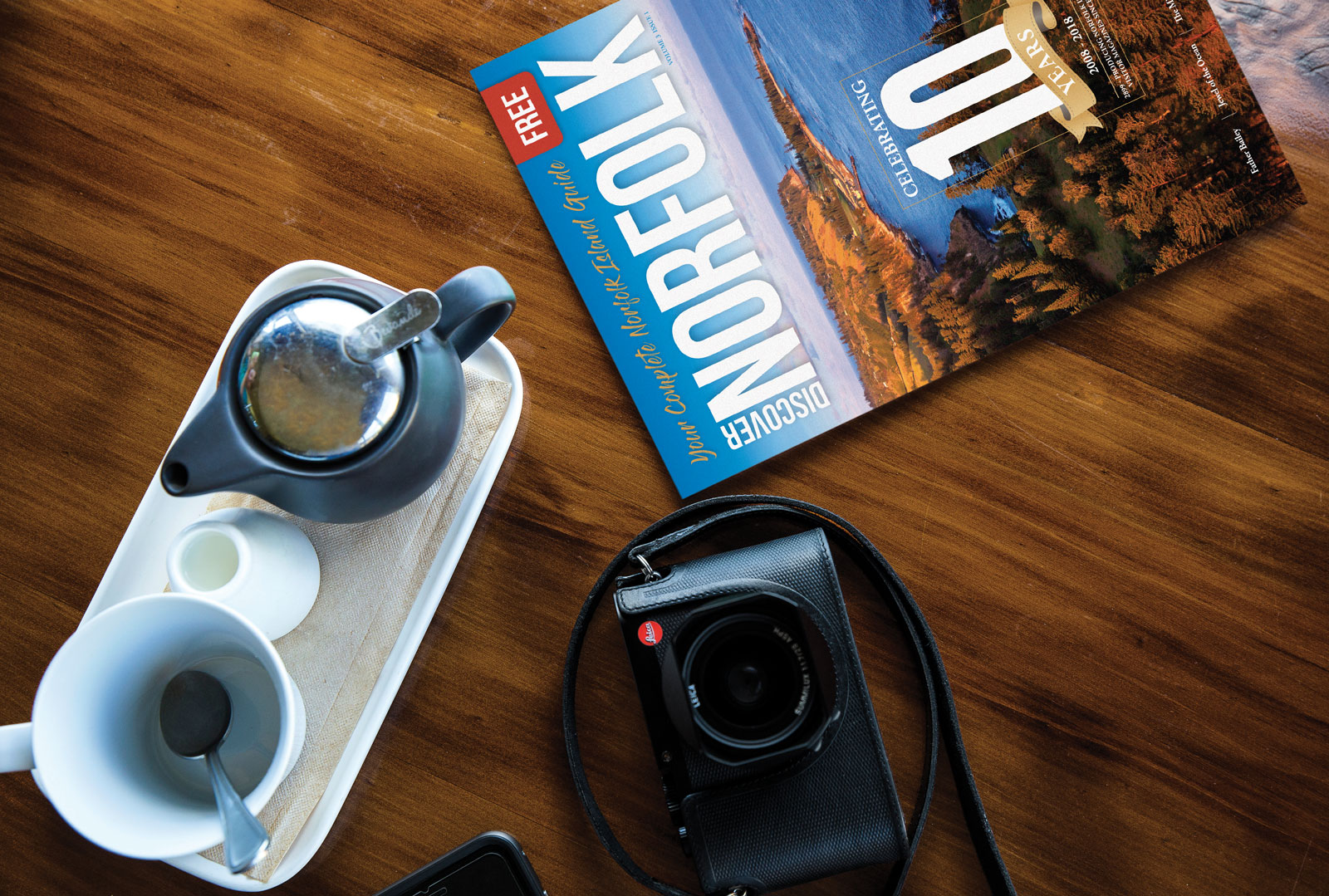
The saying goes that one man’s rubbish is another’s treasure. In World Heritage Listed Kingston and Arthur’s Vale (KAVHA) the refuse and remains of past inhabitants are today our prized possessions. Even a single shard from a mug or bowl thrown aside by an officer in the 1790s is now handled with cotton gloves, then expertly identified and catalogued. Material carefully dug from privies and trenches fill our museum displays and provide us with a tangible link to the lives of those people who once lived at Kingston.
Ceramics such as cups, bowls, plates and vases were found in large quantities in a series of archaeological digs that mostly occurred during the 1980s. The collection is important, covering a wide range of makers, styles and types, and dating from early Chinese export porcelains to mid nineteenth century English ceramics.
Norfolk Island is the second oldest British settlement in the South Pacific, founded just a few weeks after the arrival of the First Fleet in Sydney Cove in 1788. Comprising around thirty wooden buildings concentrated closely to the Landing Place and huddled under Flagstaff Hill, it eventually spread along the Sydney Bay waterfront and further inland. The earliest dated ceramic finds from trench digs in the area are Chinese export porcelain shards. Chinese export porcelain was produced in vast quantities in Jingdezhen and shipped to England and India by the East India Company. This porcelain was commonly decorated with hand painted designs in cobalt blue pigment. Although a range of qualities were produced, the shards found at Kingston are all examples of the cheaper underglaze blue painted porcelain. Made by painting the decoration directly onto the unfired body, dipping in glaze and firing once, it was an efficient production method that kept costs low.
In England, potters had been unable to match the quality and durability of the white Chinese earthenware. However, when the East India Company’s trade began to decline in 1773, English potters had the chance to wrest the ceramics market out of the hands of the Chinese. Possibly as early as 1762 Josiah Wedgewood perfected ‘Creamware’ which was thinner and harder than earlier English pottery, and by 1765 King George III’s wife, Queen Charlotte, solicited Wedgewood to be ‘Potter to His and Her Majesty’. As a result of his new title, Wedgewood changed the official name of his creamware to ‘Queen’s Ware’. Wedgewood continued experimenting and finally produced a ware with a much whiter surface which was named ‘Pearlware’. Pearlware completely eclipsed the creamware market and was manufactured by many potters, one of them naming it ‘China Glaze’.
In Kingston, early examples of English ceramics have been recovered from First Settlement contexts and include hand painted earthernwares, black basaltware, creamware and feather-edge ware. Feather-edge is the most common decoration looking like a feather pattern in blue or green on a scalloped edge. This type of decoration remained popular throughout the nineteenth century. The vast majority of ceramics recovered from Kingston date from the Second and Third Settlements. During the Second Settlement (1825-1855) civil and military officers and their families lived in the houses along Quality Row, then named Military Row. Perhaps as a plate chipped, or a new tenant found an unwanted cup or vase left behind, it was thrown out with the rubbish. At that time rubbish was disposed of down the privy (toilet), which was deep enough to take all manner of household refuse. Each house along Quality Row had two privies, one for the gentlemen and ladies of the house, and the other for their servants. It was in these privies that the vast majority of ceramics in the collection were found, becoming a treasure chest for modern day archaeologists.
As the digs progressed, literally thousands of ceramic pieces were bagged and information on their exact location and depth recorded. These bags became the next twenty years worth of work for the archaeological museum as they were individually sorted, cleaned and catalogued. From the remains a careful and vast jigsaw project began as small shards became complete objects. As the object’s maker and style became known, dating occurred which in turn made it possible to provide their social history. By knowing most of the inhabitants of each house since being built, and which house the ceramic pieces came from, it became possible to match objects with an individual or family. This is one of the special features of the collection. With the same length of time of settlement as Sydney, our landscape in comparison has had such little alteration, making our ceramic finds high in number and range of makers and styles.
Identifying the maker and style of ceramics can be a relatively straightforward process due to the use of a manufacturers mark. This mark usually provided the pattern name, the initials or name of the maker, and in many cases the town where the factory was located. However, there were so many manufacturers producing enormous quantities of wares that not all marks were identified. Some potters only stayed in business for a short time and made so few pieces that the identity of their marks has been lost to history. Additionally, many small firms saw no reason to use marks as they had no recognition value.
Ceramics found in Kingston also have another unique feature. The Pitcairn Islanders who moved into the houses along Quality Row, would personalise their ceramics with marks of identification known as ‘Pitcairn scratch marks’. The ceramics were either brought with them from Pitcairn, found here or purchased after their arrival.
The practice of marking goods with a personal mark was common amongst sailors and was continued by the Bountymutineers when they arrived on Pitcairn Island. They were used to denote ownership of a wide range of property including trees, bottles, crockery, cutlery and tools. As there were a small number of European surnames in the original settler group on Pitcairn, the single letter originally used evolved into more complex marks. As property was inherited down through the generations, so too were the individual marks. A register of 150 personal marks dating to about 1893 still survives on Pitcairn Island today. While personal marks are still commonly used on Pitcairn, the custom appears to have declined amongst the Pitcairn Islanders on Norfolk Island during the second half of the nineteenth century, and is no longer in practice.
Another striking feature of our ceramics collection is the range and beauty of their patterns and decorations. Hand painting was the only option for decorating ceramics prior to a revelation occurring towards the end of the eighteenth century with the transfer printing process. Transfer printing allowed a potter to duplicate a pattern by transferring it from a copper plate to a ceramic vessel via a specially treated paper. It was then glazed and fired in a kiln. This process was much cheaper and quicker than the hand painting techniques, and for the first time allowed consumers complete sets of identical dishes. However, this ease of production provided manufacturers with the problem of where to find pictures to decorate their wares. Many pictures were simply copied from books and amongst the most popular were stately homes, cathedrals and castles. The Copyright Act of 1842 meant however, that English decorative art designs had to be registered at the British Patent Office. This seriously limited the range of subjects available for reproduction, which in turn inspired many ‘romantic’ patterns and artistic designs. From 1842 to 1883 registered designs were marked with a diamond-shaped stamp that indicated the day, month and year the patent took effect. Patents were initially for periods of three years. After 1883 registered designs were marked with an identifying number.
The first successful colour used in transfer printing was deep blue cobalt. This was the only colour that could withstand the high temperatures needed for the underglaze transfer process. By 1828 new techniques allowed black, green, yellow and red enamels to be transferred, resulting in prints of two or more colours. Other types of printing and decoration included flow blue, mocha ware, sponge decoration, hand painted, lustre ware and relief moulded. All of these types can be seen in the collection.
The story of the making, decorating and identification of ceramics from the earliest Chinese export porcelain, through all the advances in English ceramics, is fascinating. The ceramics found during archaeological digs in Kingston hold added layers of interest, and the collection is an important part of our history and heritage. Discarded as the refuse of past generations it has become a valuable legacy for us today and for those still to come.
____
Image Credit: Robin Nisbet
www.robinnisbet.com
____
Article content disclaimer: Article first published in YourWorld, Volume 02 Issue 04, 2012. Please note that details of specific travel, accommodation and touring options may be outdated. References to people, places and businesses, including operating days and times may be have changed. References to Government structure and Government businesses/entities may no longer be applicable. Please check directly with businesses and/or Government websites directly rather than relying on any information contained in this article before you make travel arrangements.


